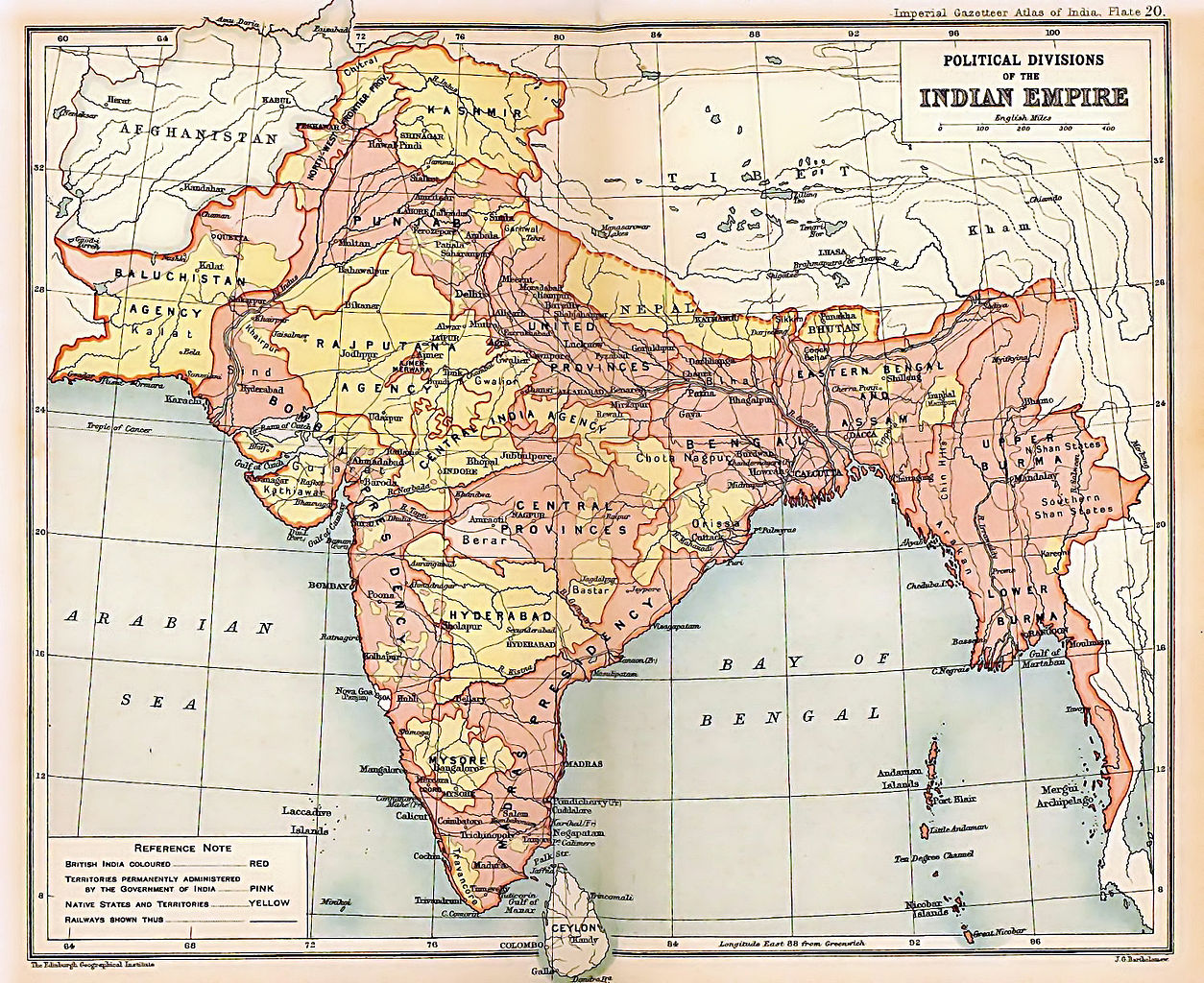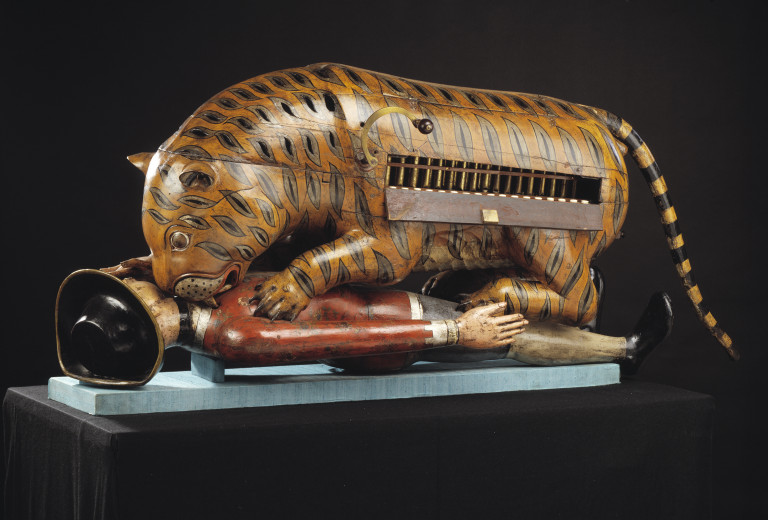
British Colonial Expansion in India
After the Battle of Plassey, the East India Company (EIC) became one of many territorial powers in India. The once powerful Mughal Empire was crumbling, leading to the emergence of regional powers such as the Sikh empire, the Maratha Confederacy, and the Kingdom of Mysore.
 ‘Tipu’s Tiger”, an automaton and musical instrument depicting a tiger mauling an Englishman. The object reflected the ruler of Mysore, Tipu Sultan’s hatred for the East India Company. (circa-1790s).
‘Tipu’s Tiger”, an automaton and musical instrument depicting a tiger mauling an Englishman. The object reflected the ruler of Mysore, Tipu Sultan’s hatred for the East India Company. (circa-1790s).
Source: Victoria and Albert Museum, CC BY-SA 3.0, via Wikimedia Commons
During this period, the Company engaged in multiple wars with these regional successor states. The last great Indian state, the Sikh Empire, fell in 1849 at the conclusion of the Second Anglo-Sikh War. On the eve of the Indian Mutiny or the ‘First War of Indian Independence’ in 1857, the East India Company was the paramount power on the Indian subcontinent.

British soldiers at Lucknow, c. 1857-9; Unknown author, Public domain, via Wikimedia Commons
The 100 year period from 1757 to 1857 saw a number of changes in the British East India Company’s approach to revenue generation, military activity, and administration. The EIC was able to establish near supremacy in India. It saw off the trading threats of the Dutch, Portuguese and French. It also quashed a number of regional threats on the Subcontinent itself.
To put the relative ease in which the EIC were able to assume power into context we must go back to the late 17th and early 18th century. This period saw the fragmentation of the Mughal Empire into smaller successor states such as Nizami rule in Hyderabad, Nawabi rule in Oudh and Nawabi rule in Bengal.
The Marathas of the Deccan were able to establish themselves as the dominant military force on the Subcontinent after continuous battles with Mughal vassal states and the Mughal army. Whilst the Marathas weakened the Mughal Empire, other states and empires were also able to establish themselves such as the Sikh Empire, Nawab rule in Bengal, and the Kingdom of Mysore.

Shivaji, initiated the formation of the Maratha Confederacy in the late 17th century; Sailko, CC BY 3.0, via Wikimedia Commons
The emergence of the Kingdom of Mysore highlighted the volatile nature of political power during the 100 year period from Plassey to Mutiny. Mysore was able to assert itself as a regional power in part due to preoccupations of potential rivals with battles against their own neighbouring states. The Mughals were constantly warring with the Marathas whilst the British and French were still contesting territory on the east coast. It was in the midst of these military contests that Mysore, under Haidar Ali Khan and Tipu Sultan, was able to expand its territories and innovate institutionally.

A hill fort in the Kingdom of Mysore; Hunter, James, Public domain, via Wikimedia Commons
The British were one of many powers on the subcontinent in this period. Although it suffered some defeats, it ultimately subdued all of the hostile regional powers and threats from European powers. By the 1850s, the EIC were the dominant force on the Subcontinent. The French having been defeated in the third Carnatic War of 1757-1763 marked British supremacy amongst the European powers in India. Dutch naval decline was evident from the early 18th century and any illusions of its military or naval power in the Subcontinent was comprehensively put to bed when in 1780 Britain declared war on the Dutch Republic on the grounds that it was a neutral power providing shipping services to British enemies such as the French and revolutionary America thus undermining the effectiveness of its naval blockades. The Anglo-Dutch treaty of 1824 effectively ended Dutch ambitions on the Subcontinent.
The Marathas were also subdued, along with the Sikh Empire. The Marathas fell victim to divide and rule. The British intervened in succession struggles and made treaties with separate Maratha princes which undermined the integrity of the Maratha Confederacy. Battles with neighbouring states also confounded Maratha dominance. The Marathas under Yashwantrao Holkar sought to make alliances with Indian powers in response to British aggression but was undermined by the British who also made alliances or threatened to annex non-cooperative regional powers. Once the Maratha threat was extinguished the only major threat was the Sikh Empire which was also conquered after the Second Anglo-Sikh War of 1848-9.

Yashwantrao Holkar and Ranjit Singh, 1805; Unknown author, Public domain, via Wikimedia Commons
The EIC justified their belligerence by the logic of two doctrines, namely, the doctrine of lapse and the notion of paramountcy. The EIC took a zero-tolerance policy stance on any power that was deemed hostile to it and subsequently sought to annex or demand tribute from such powers, this was known as Paramountcy. The doctrine of lapse was another complementary policy of annexation. It was based on the rationale that annexation was warranted if a given ruler did not produce a direct male heir. This was dubious reasoning because succession customs on the Subcontinent were not based solely on male primogeniture. In sum, these two doctrines were a means to justify and provide rationale to British expansionist desires.
Share this Article
Our Funders

